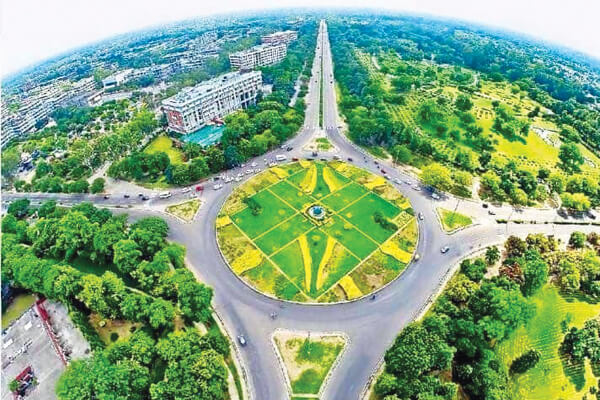Introduction
Article Source : ChatGPT
Nestled at the foothills of the Shivalik range, Chandigarh stands as a testament to modern urban planning and architectural innovation. As India’s first planned city, Chandigarh has become an emblem of contemporary urbanism and a model of efficient city design.
A Vision Realized
The story of Chandigarh begins with India's independence in 1947. Faced with the daunting task of designing a new capital for Punjab following the partition, Prime Minister Jawaharlal Nehru envisioned a city that would reflect the modern aspirations of a newly independent nation. To realize this vision, Nehru enlisted the expertise of French architect Le Corbusier, who was renowned for his pioneering work in urban planning.
Le Corbusier's vision for Chandigarh was grounded in the principles of modernist architecture and city planning. His design emphasized functionality, order, and openness. The city was meticulously planned in sectors, each self-contained with its own amenities. This design approach was meant to foster community living while ensuring efficient use of space.
The Architecture of Chandigarh
One of the standout features of Chandigarh is its unique architectural style. Le Corbusier's influence is evident throughout the city, particularly in the Capitol Complex, which houses the Punjab and Haryana High Court, the State Assembly, and the Secretariat. These buildings are iconic examples of Brutalist architecture, characterized by their raw concrete structures and bold geometric forms.

The Capitol Complex is also home to the famous Open Hand Monument, a symbol of peace and reconciliation, and the City Museum, which showcases Chandigarh’s history and the significance of its design. These structures are not just functional but also artistic statements that reflect the ethos of their time.
A City of Sectors
Chandigarh is organized into sectors, each designed to be a self-sufficient unit. This grid-based layout is both practical and aesthetically pleasing. Each sector typically includes residential areas, shopping centers, parks, and schools. This organization minimizes travel time and promotes a sense of community among residents.
One of the most notable sectors is Sector 17, which serves as the commercial hub of the city. It boasts a range of shops, restaurants, and entertainment options, making it a vibrant place for both locals and visitors. Meanwhile, Sector 22 is known for its bustling market and local businesses.
Green Spaces and Public Parks
Chandigarh is also renowned for its extensive green spaces and public parks. The city is often referred to as “The City Beautiful,” and its numerous gardens and parks contribute to this reputation.
Rock Garden : Created by Nek Chand, this unique garden is constructed from industrial and home waste materials, creating a whimsical landscape filled with sculptures and artistic installations.
Sukhna Lake : An artificial reservoir at the foothills of the Shivaliks, Sukhna Lake is a popular spot for leisure activities. Visitors can enjoy boating, jogging, or simply relaxing by the lakeside.
Zakir Hussain Rose Garden : This expansive garden is home to over 1,600 different species of roses, making it a delightful retreat for nature lovers and a frequent venue for cultural events.
Cultural and Educational Hub
Beyond its architectural marvels and green spaces, Chandigarh is also a center for culture and education. The city hosts several cultural events throughout the year, including music festivals, dance performances, and art exhibitions. Institutions like the Punjab University and the Postgraduate Institute of Medical Education and Research (PGIMER) are highly regarded, attracting students and professionals from across the country.
Future Prospects
As Chandigarh continues to evolve, it remains committed to preserving its unique identity while embracing modern advancements. The city's administration is focused on sustainable development and smart city initiatives, ensuring that Chandigarh retains its charm while adapting to contemporary needs.
Conclusion
Chandigarh is more than just a city; it is a living embodiment of modernist principles and visionary urban planning. Its well-structured layout, innovative architecture, and commitment to green spaces make it a remarkable example of how thoughtful design can create a harmonious and functional urban environment. For anyone interested in the intersection of architecture, planning, and culture, Chandigarh offers a fascinating and inspiring journey.
